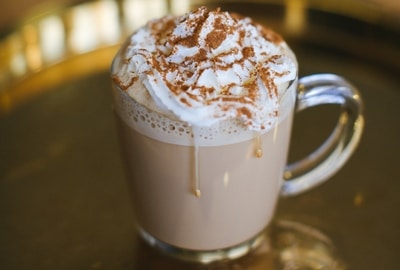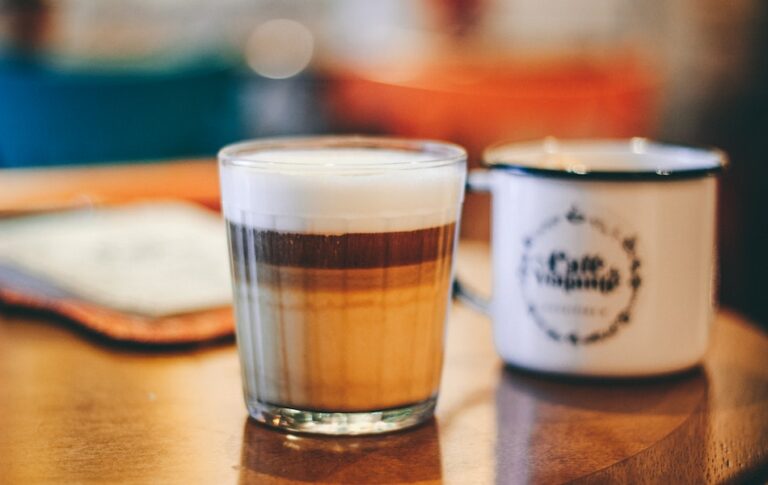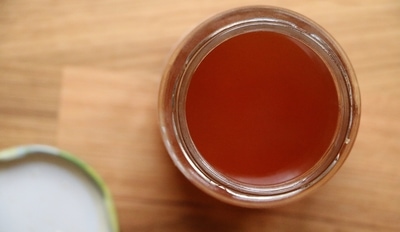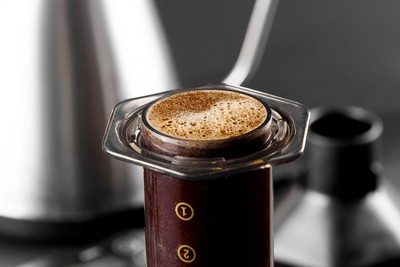Is Coffee Fruit Juice? What Is Your Cup of Coffee Exactly
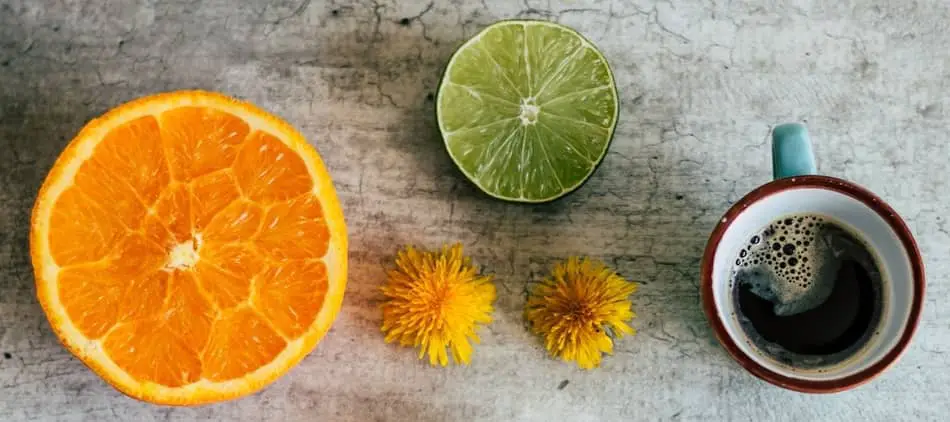
The fact that coffee beans come from a fruit leads many to wonder whether coffee is actually a type of fruit juice. So what’s the deal, is coffee fruit juice?
A cup of coffee is not fruit juice because it is made from the seeds and not the flesh of the coffee cherry fruit. Coffee is an infusion that is created when roasted coffee beans (the seeds) are combined with water. The water acts as a solvent, dissolving the soluble part of the coffee bean.
Your coffee definitely isn’t a type of fruit juice. But the flesh of the coffee cherry can be made into a deliciously fruity drink. Read on to find out more.
Why coffee is not fruit juice
We all know that coffee is made using coffee beans. But what you may not know is what exactly a coffee bean is.
Your cup of coffee is made using the seeds of the coffee fruit from the coffee plant. Coffee seeds resemble normal beans (legumes), which is why they have come to be called coffee beans.
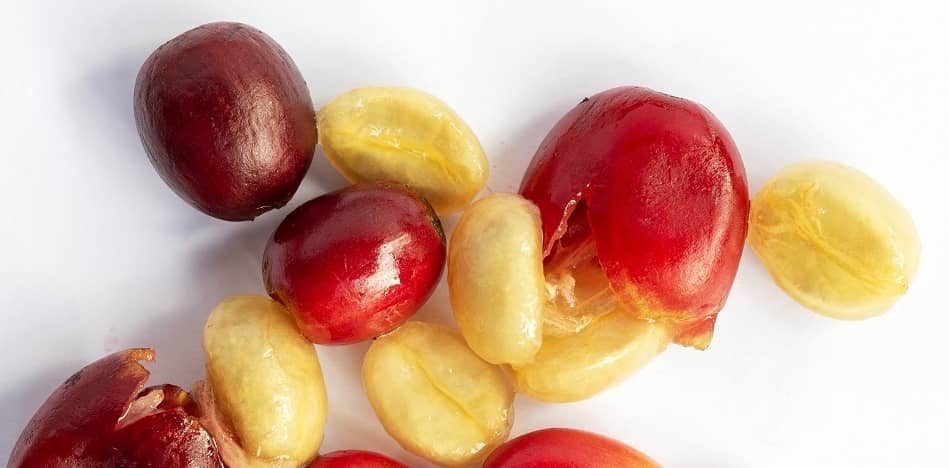
Also, because the coffee fruit resembles normal cherries, it’s come to be called the coffee cherry.
So why isn’t coffee a type of fruit juice if it’s from a fruit?
To answer that question, let’s first look at the definition of fruit juice as defined by the British Soft Drinks Association:
Fruit juice is 100% pure juice made from the flesh of fresh fruit
British Soft Drinks Association
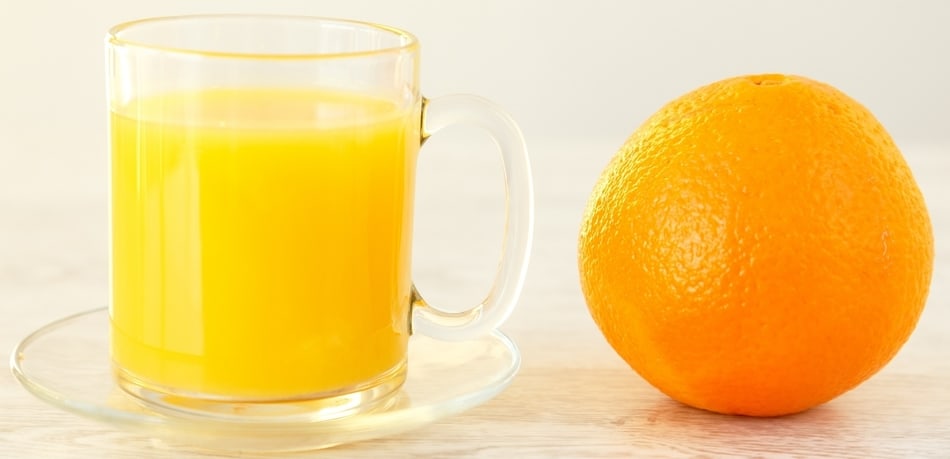
Due to the fact that the seed (bean) is used in order to make a cup of coffee and not the flesh, it cannot be described as a fruit juice.
As a side note, because coffee beans are not a true bean (legume) of the vegetable family, coffee cannot be described as a vegetable juice either.
So what is coffee? Coffee is an infusion made up of the soluble material from the coffee beans.
Around 35 percent of a coffee bean is soluble in water, but a regular cup probably contains about 20 percent of soluble coffee material.
In other words, 20 percent of the ground coffee you used infused into the water, and 80 percent remained as it was.
Can you juice coffee beans?
If you were to try to extract the water contained within a coffee bean, you’d have a very hard time making a full glass as roasted coffee beans contain as little as two percent water. The water is driven off during the roasting process.[1]
When you compare this to an orange, for example, which has a water content of over 86 percent, you see why trying ‘to juice’ coffee beans would be practically impossible.[1]
What about juicing unprocessed coffee beans that haven’t been roasted then?
Coffee beans that have been recently harvested are actually green in colour in their raw state. They contain a far higher water content at around 45 – 55 percent.[2]

Although that’s definitely not at the heights of the water content of an orange, you’d definitely be able to easily extract enough to create a glass of ‘coffee bean juice.’
The reason it’s not done, however, is that raw, green coffee that has yet to be roasted is nothing like its delicious, roasted cousin. Green coffee has an unpleasant earthy, woody and hay-like smell, which would definitely not make a tasty juice.
Coffee beans only become palatable once they’ve been roasted due to chemical changes such as the Maillard reaction that create new flavour compounds during roasting.
So, we’ve established that your cup of coffee isn’t a fruit juice because it’s made from coffee beans. But what about the fruit flesh of the coffee cherry, can that be juiced?
Can coffee cherries be made into a juice?
The coffee cherry is a type of stone-fruit (drupe) whose flesh is safe to consume and can, therefore, be made into an enjoyable fruit juice drink.
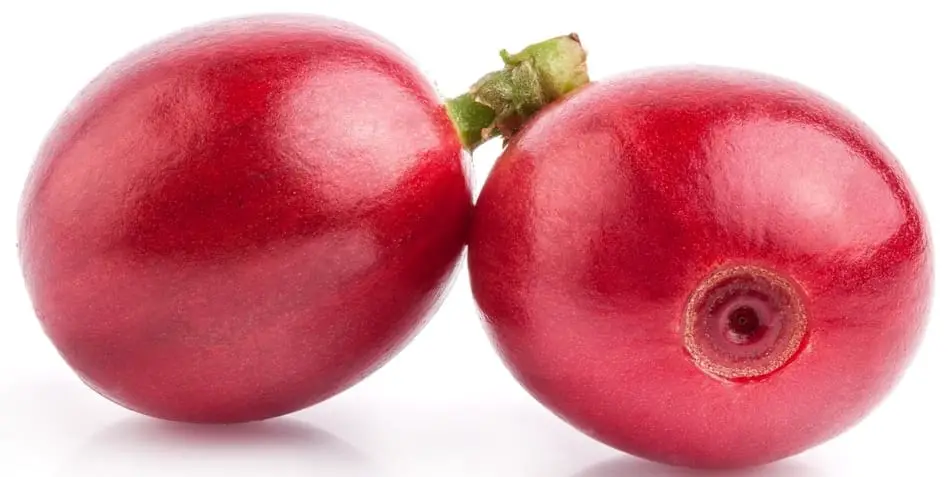
The flesh of the coffee cherry has a honeydew melon sweetness with a refreshing acidity.
In some parts of the world where coffee is produced, there is a practice of juicing the coffee cherries.
Despite it being practised in some countries, it is not commonly found. The reason is that the coffee cherry contains very little fruit flesh as the beans occupy most of the space.
This makes juicing the cherries a laborious job, especially when coffee-producing countries IL enjoy some of the most delicious fruits on the planet that certainly can easily be made into delicious juice drinks.
So whilst most farms dispose of the coffee cherries or use them as compost to fertilise the farms, there is a practice that’s becoming increasingly common of drying the cherry skins in order to make a drink known as cascara.
Cascara: the drink made from dried coffee cherry skins
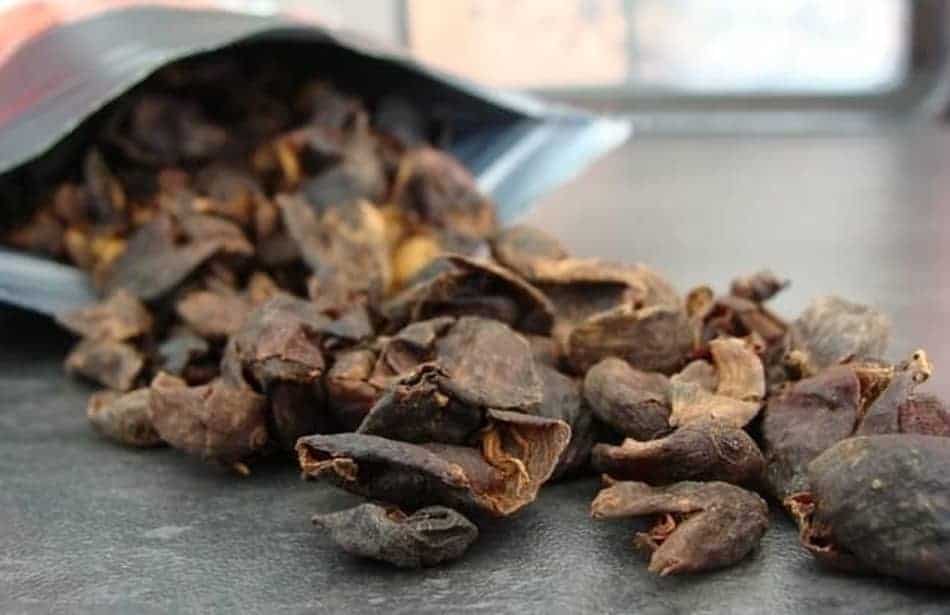
Cascara has been around for a long time. It’s drunk in South American countries such as Peru and Bolivia, as well as in Yemen in Western Asia.[3]
But in the western world, cascara is only just beginning to make a name for itself.
Some coffee farmers choose to dry the coffee cherry skin in order to turn it into cascara. Cascara is a Spanish word (cáscara) that means husk, peel or skin.
Once the beans have been extracted from the coffee cherry fruit, the skins are laid out to be dried. The drying process causing the skins to turn woody, resembling husks.
Because the coffee cherry is a fruit, dried cascara naturally displays fruity flavours that can be infused in boiling water to create a delicious drink.
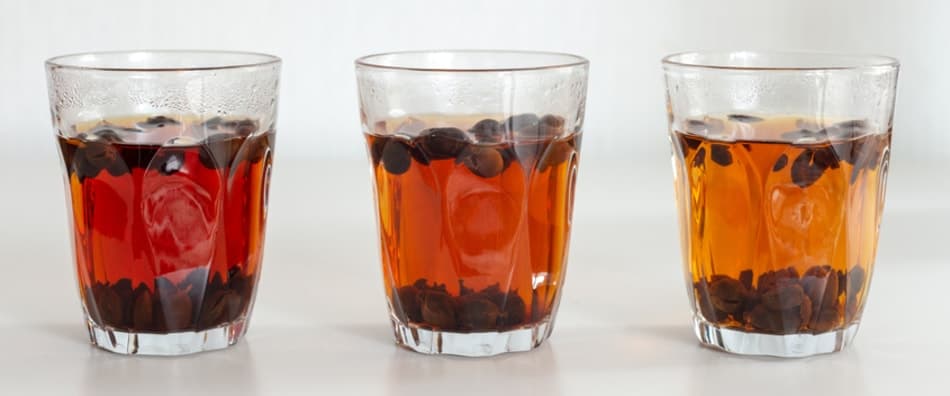
Cascara flavours range from berries to currants to floral and even tobacco notes, depending on the particular variety of coffee used.
The drying process gives cascara a deep flavour profile like you find when a grape is dried in order to become a raisin.
Cascara seems to be at an intersection of where coffee meets tea, which is why it’s often called coffee cherry tea. However, the problem with calling it tea is that cascara is not of the Camellia sinensis plant from which tea is derived.[4]
More confusion arises over whether to define it as coffee as cascara most certainly does come from the coffee plant. But again, as coffee is prepared using the beans of the coffee cherry, it cannot be called coffee either. Therefore, the best description for cascara is a fruit tisane.
However you decide the call cascara, the good news is that making it is a simple affair. We have a guide to everything about cascara, which contains simple instructions on how to brew a cascara tisane
Cascara tisane can also be combined with sugar to create a delicious syrup, which is great for adding to hot and cold drinks or topping desserts. Make sure to check out our guide to cascara syrup.
All this talk of fruit flavours and aromas of berries and currants might make you wonder whether coffee beans themselves can display the same inviting qualities? Well, it turns out they can.
Coffee beans have natural fruity flavours too
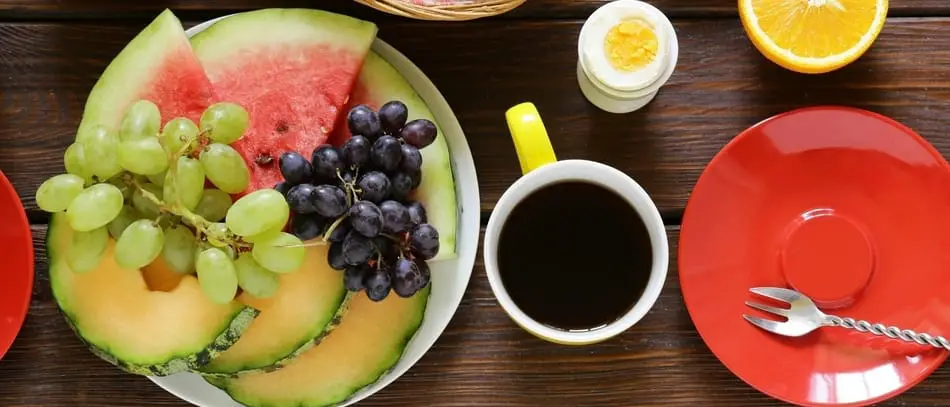
The flesh of the coffee cherries impart their fruity flavours into the coffee beans. The natural sugars also give the beans a sweetness too.
Reading this, I know you’re wondering why on earth your coffee is bitter with no fruity flavours whatsoever?
It has to do with two factors: quality and roasting. There are two main varieties of coffee beans that are known as arabica and robusta. Arabica is far superior to robusta in its flavours because, amongst other factors, it contains higher levels of sugars and less caffeine levels which cause bitterness.
The second factor that heavily influences a coffee’s taste is the roasting process. Roasting is essential in order to produce the heady flavours and aromas that we all associate with coffee.
But the majority of the world’s coffee is roasted too darkly, producing an overwhelming bitterness through the chemical reactions that take place.
It’s an unfortunate fact that for so much of the planet, coffee is nothing but a commodity used as a pick-me-up when we need a bit of energy.
As such, the focus is less on quality and more on quantity – as well as maximising profits. Poor quality coffee has unpleasant flavours which can be hidden by dark roasting, causing a more uniform taste that’s smoky and ashy.
This is the reason for the misconception that all coffee is bitter, and that it has to have sugar added to it in order for it to become palatable.
When specialty arabica coffee is produced with care and is meticulously processed and roasted by someone looking only to enhance the beautiful flavours in the green coffee, the result is nothing short of spectacular.
The coffee is sweet and fragrant and has an acidity which adds a beautiful, crisp quality that makes it light like a tea. Specialty coffee is definitely not bitter, so there’s absolutely no need to add sugar.

How to try specialty coffee
No doubt you’d like to give specialty coffee a try. Try googling specialty coffee near me, and visit one of the coffee shops listed.
Whichever type of coffee you decide to order, give it a try first without sugar. You’re in for a pleasant (non-bitter) surprise.


